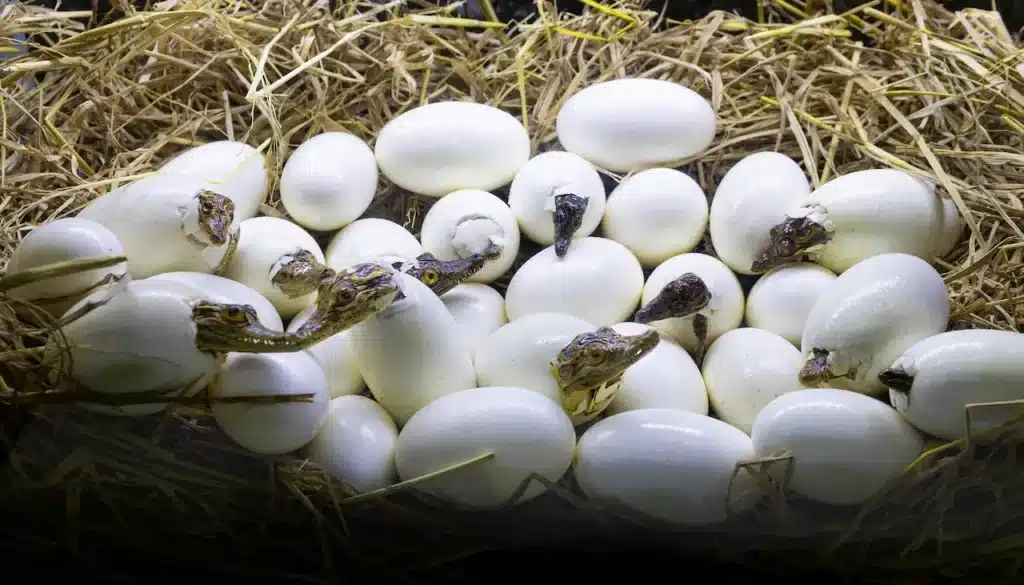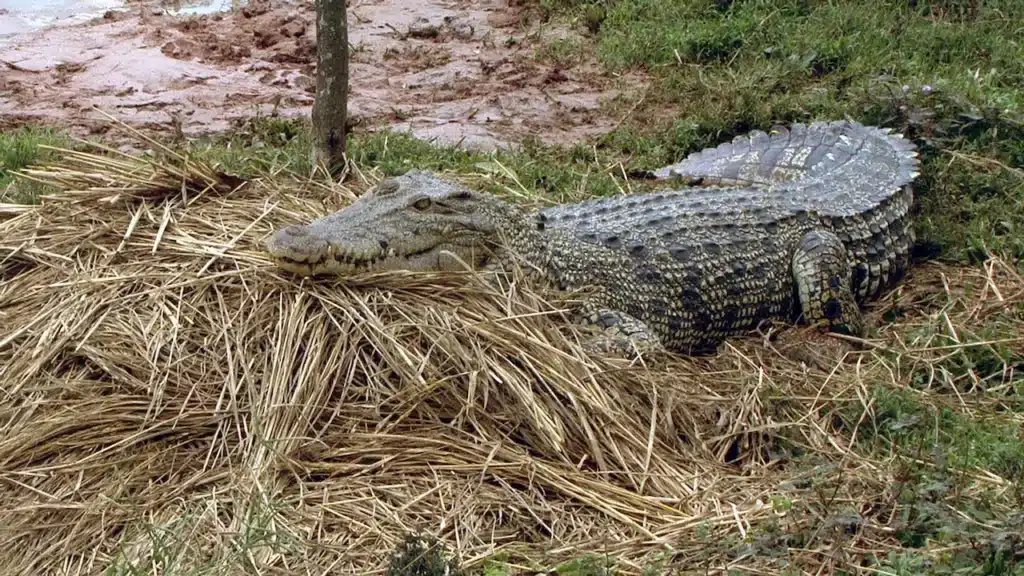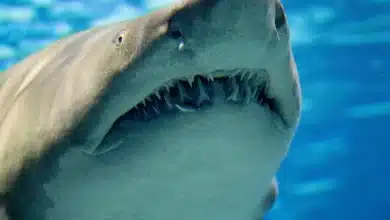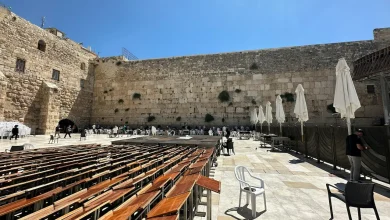How Mother Crocodiles Protect Their Eggs
Maternal instincts in Mother Crocodiles
Mother crocodiles, unlike many other reptiles who abandon their eggs once they have been laid, are devoted parents. The female crocodile covers the nest with vegetation or soil after laying her eggs in the nest. She doesn’t stop at that. She doesn’t leave the eggs alone, but stays nearby to protect her future offspring. The mother will attack or chase away any predator, whether it is a bird, raccoon, or monitor lizard.
A remarkable change in behaviour occurs when the time is right for the hatchlings. When the baby crocodiles start to chirp inside their shells, their mother will respond by uncovering the nest to help them. Despite having the most powerful bite in the animal kingdom, she displays extraordinary gentleness–delicately rolling the eggs in her massive jaws to help crack them open without harming the tiny hatchlings inside. She will often take the newly hatched babies in her mouth and carry them to the edge of the water. This is a surprising act of tenderness for such a powerful predator.

Some crocodiles continue to care for their young even after they leave the nest. A mother can remain near her nesting site for several weeks, or even months. She will protect and guard her young as they learn how to hunt and swim. She will stay to watch them if the nesting site offers a lot of food and is safe. If conditions are not ideal, she will encourage her chicks to move on in search of a better habitat.
There are some exceptions to the rule that most male crocodiles do not play a role in parenting. The male Gharials, a threatened crocodilian native to India, have been seen helping to care for the young. This is a rare trait among crocodiles.
These behaviours reveal the hidden side of crocodiles. Behind their feared reputation is a deep instinct for protecting and nurturing their offspring. This ensures the survival and future generations in a harsh, competitive environment.
Some Reptiles Do Not Abandon Their Eggs
Reptiles are often thought to be cold and distant parents, laying their eggs and then leaving them to survive on their own. But crocodilians break this stereotype. Unlike most reptiles, mother crocodiles are highly attentive and protective, showing surprising care for their offspring. These mothers provide a remarkable level of protection to their babies, not only while the eggs are incubating but also for several weeks or even months after the hatchlings emerge.
The world into which baby crocodilians are born is incredibly dangerous. From the moment the eggs are laid, they are targets for a variety of predators. Monitor lizards, birds, and small mammals often seek out the nests to feast on the eggs, while larger predators, including even adult crocodiles, may prey on hatchlings. In fact, in some regions, only one in every 25 hatchlings survives long enough to grow into an adult crocodile. This harsh reality makes the role of the mother’s vigilance vital for the survival of her young.
Interestingly, crocodilian mothers don’t need to feed their babies. Hatchlings are instinctively able to hunt and catch small prey such as insects, fish, and amphibians as soon as they leave the nest. But that doesn’t mean the mother’s role is over. She continues to act as their guardian, doing many of the same things that mammalian mothers do, protecting them from danger, guiding them to safe places, and even carrying them gently in her massive jaws. Her first act of care begins with the construction of a nest, carefully built to provide the right conditions for her eggs to develop.

Mother Crocodiles Building Nests
Crocodilians construct different types of nests. However, they all serve the same purpose: to keep the eggs warm till they hatch. The majority of crocodiles create a hole. The crocodiles carefully arrange up to fifty eggs in the holes. The eggs are covered in sand, which keeps them warm. The female will sprinkle water or grass on the nest to cool it down when the ground becomes too hot.
Nests are built by alligators, some crocodiles and caimans. They build them from leaves, branches and mud. The mother gathers these materials and shapes them into an approximately six-foot-wide by three-foot-high mound. She digs a hole at the centre of the mound and lays between 20 and 70 eggs. Then she covers the eggs. The materials decay and emit enough heat to keep eggs warm.
Mother crocodilians guard their nests by staying near them. The mother will chase away any intruders who come close. She is a fierce and protective mother. Her presence is enough to scare predators away.
Some small and large mammals, such as lizards, enjoy eating crocodilian eggs. These animals can destroy the eggs if the mother leaves the nest even for a brief time. The young crocodilians are also faced with many enemies. Even adult crocs can prey on young crocodilians. Hatchlings hide for their first two to three years, until they are large enough to defend themselves.
Baby crocodilians have a “tooth” at the tip of their nasopharynx that helps them break free of their shells. The special feature disappears soon after hatching. A mother crocodilian will lead her young into the water, much like a duck would. In the first few weeks of life, babies will often swim after their mother, like little scaly, tiny ducklings.

Crocodiles Protect Their Eggs and Young
Mother crocodiles have the highest level of parental devotion in the reptile kingdom. She carefully buries her eggs, which can range from 20 to 70, in a nest she digs into the sand, or a mound made of leaves, branches and mud. The mother does not abandon her eggs like most reptiles. She stays near them to protect them at all times. The constant vigilance of the mother is essential because crocodile eggs attract many predators. These include monitor lizards and raccoons, as well as birds and other crocodiles. The mother defends her nest with her size and strength, attacking or chasing anything that threatens the unborn babies. She is also active in controlling the temperature of the nest, adding water and vegetation to make sure the eggs are incubated properly.
The mother continues to care for her babies until the time comes for them to hatch. When she hears her babies chirping from their eggs, she gently helps them out by removing the nest. She uses her powerful teeth to gently pick up the delicate hatchlings. Sometimes she cracks their shells to help them emerge. She then carries them in her mouth into the nearby water. She will remain a vigilant guardian for the next few months as her young start their lives in a dangerous environment. Hatchlings are still vulnerable and need to be protected from predators such as birds, fish or even adult crocodiles. The baby crocodiles, like ducklings, swim behind their mother, depending on her to protect them from danger. This level of care gives the next generation a fighting chance to survive in the wild.
Conclusion
Crocodiles may be one of the most vicious predators they also have a protective and gentle side. Mother crocodile ensures her babies’ survival by building and protecting her nest, helping them hatch and guiding them to the water. The crocodiles’ survival has been attributed to this remarkable maternal care for millions of years.




